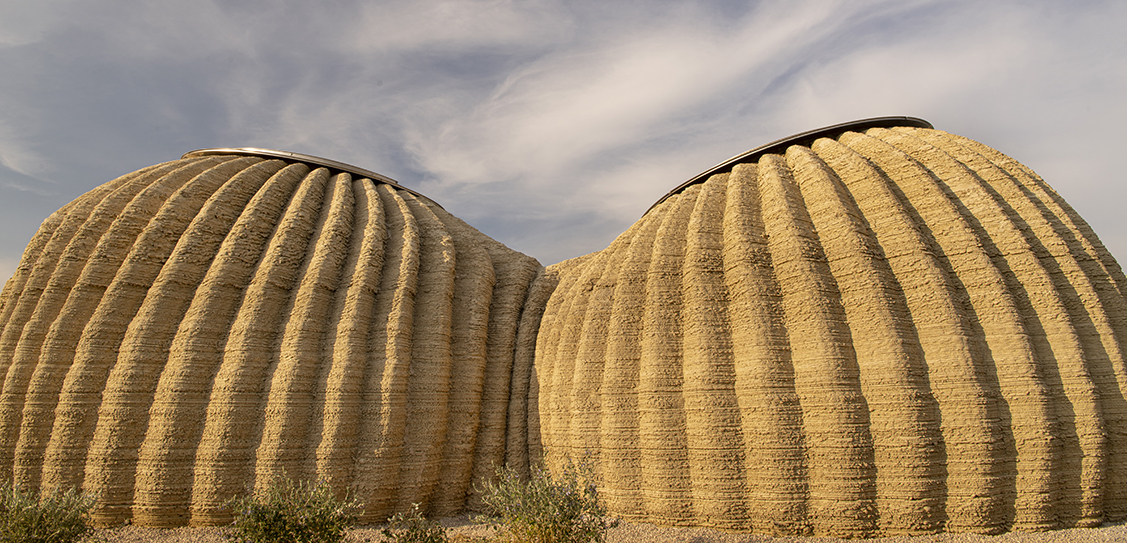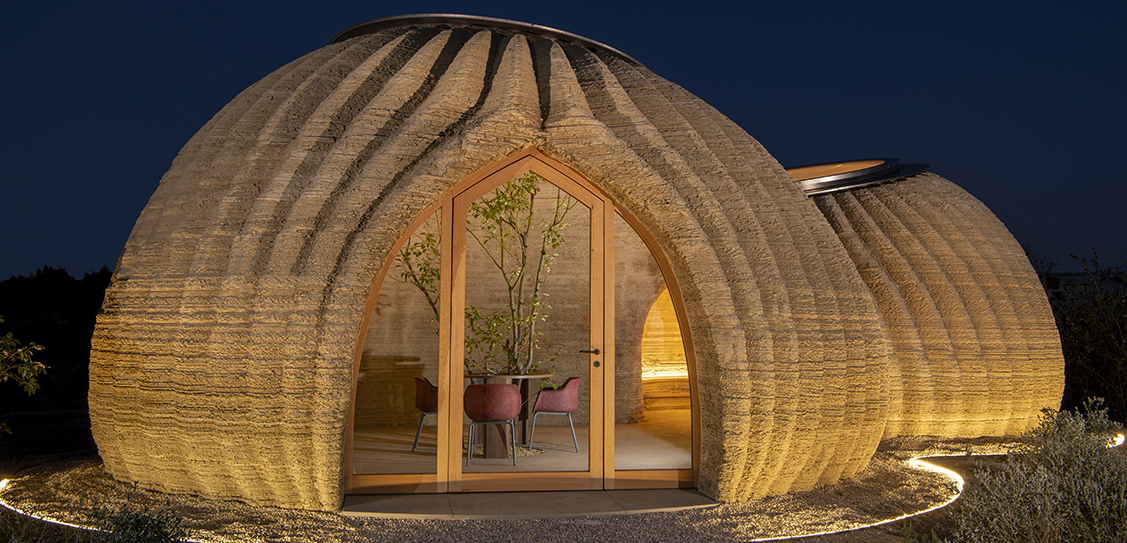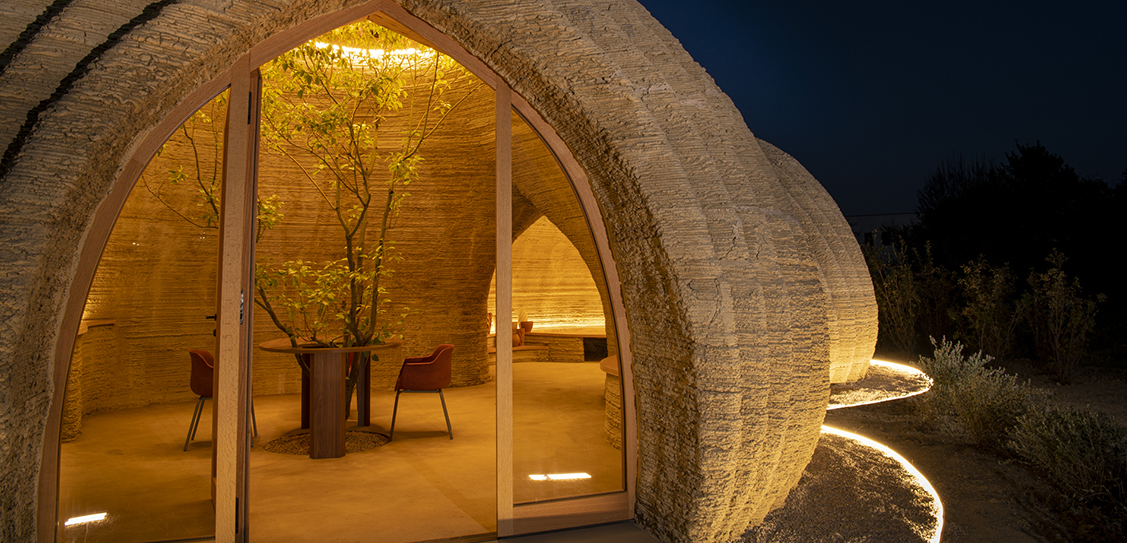Located in Ravenna, Italy, TECLA is the result of eco-sustainability research from the School of Sustainability, a research project by Mario Cucinella and the vision of Massimo Moretti, Founder of WASP’s (World’s Advanced Saving Project) 3D printing technology.
The project responds to the climate emergency, the need for sustainable homes and the global issue of emergency housing in the context of urgent crises such as natural disasters.
TECLA is an innovative circular economy housing model that brings together research on vernacular construction practises, the study of bioclimatic principles and the use of natural and local materials. It is a near zero-emission project: its casing and the use of an entirely local material allows for the reduction of waste and scraps. This and the use of raw earth make it a pioneering example of low-carbon housing.
For this project, Mario Cucinella Architects not only explored housing solutions in formal aesthetic terms, it also studied the building’s shape in relation to its climate and latitude. In addition, the composition of the earth mixture responds to local climatic conditions and the filling of the envelope is parametrically optimised to balance thermal mass, insulation and ventilation according to the climate needs.
TECLA is a composition of two continuous elements that through a sinuous and uninterrupted sine curve culminate in two circular skylights that convey the ‘zenith light’. The atypical shape, from the geometry to the external ridges, has enabled the structural balance of the construction - both during the 3D printing phase of the envelope and once the covering is completed - giving life to an organic and visually coherent design.
With an area of about 60 sq m, it comprises a living zone with a kitchen and a night zone which includes services. The furnishings - partly printed in local earth and integrated into the raw-earth structure, and partly designed to be recycled or reused - reflect the philosophy of a circular house model.
The technological research of WASP, specialised in Km0 3D printing from raw earth, has led to an innovative 3D printing technology called Crane WASP, the first in the world to be modular and multilevel, designed to build construction works collaboratively. TECLA uses two synchronised printer arms simultaneously, thanks to software capable of optimising movements, avoiding collisions and ensuring streamlined operation. Each printer unit has a printing area of 50 sq m which therefore makes it possible to build independent housing modules in a few days.
TECLA was chosen as one of the 17 building projects from around the world for ‘Build Better Now’, a virtual exhibition that was housed in the COP26 Built Environment Pavillion. The project was selected to address the need to reduce the construction industry’s environmental impact, as buildings currently consume over a third of the energy produced and are responsible for 40% of carbon emissions.
TECLA is made entirely in Italy and can be delivered with 200 hours of printing, 7000 machine codes (G-code), 350 12mm layers, 150km of extrusion, 60 cubic metres of natural materials for an average consumption of less than 6kW.



